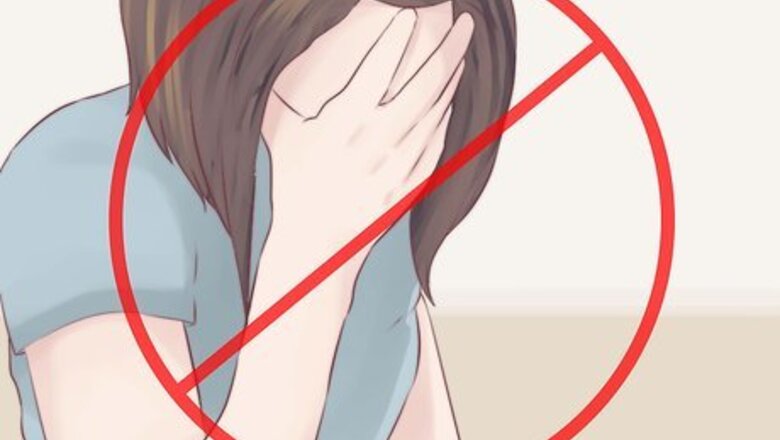
views
X
Trustworthy Source
Mayo Clinic
Educational website from one of the world's leading hospitals
Go to source
Research suggests that gum disease occurs when tartar builds up below your gum line, which you'll likely need to get cleaned by a dental hygienist.[2]
X
Trustworthy Source
Centers for Disease Control and Prevention
Main public health institute for the US, run by the Dept. of Health and Human Services
Go to source
You can prevent gum disease with good dental hygiene, and you may be able to improve your gum health with home treatments. However, it's best to see your dentist if you suspect you have gum disease, especially if you have bleeding gums or loose teeth.
Treating with Home Remedies

Reduce stress. According to the Academy of General Dentistry (AGD), there's a link between stress and your dental health. People under stress have a compromised immune system that makes it harder for them to fight off the bacteria that causes periodontal disease and makes them more prone to gum infection, but also general problems such as diabetes or heart disease. Researchers have also learned that not all stress is created equal. In studies done at three different U.S. universities, participants experiencing financial worries were at greatest risk for periodontal disease.
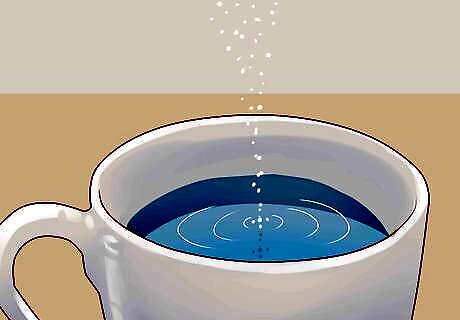
Make a sea salt solution. Dissolve a small amount of sea salt in a cup of warm water. Swish a sip of the solution in your mouth for 30 seconds and spit it out. Repeat several times. Salt water will reduce swollen gums, gum bleeding and will also decrease the swelling caused by infection. However, if the infection has advanced to an abscess, then you will need antibiotics. Add this mouth rinse to your twice-daily brushing routine.
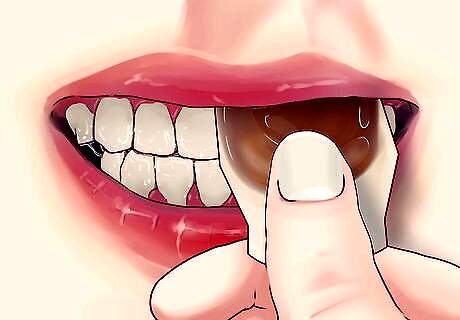
Apply tea bags. Steep a tea bag in boiling water for 2-3 minutes, remove it, and allow it to cool until you can handle it comfortably. Hold the cooled tea bag on the affected area of your gums and keep it there for about five minutes. The tannic acid in the tea bag can work effectively to relieve gum infection. Directly applying the tea bag to your gums is more effective than simply drinking the beverage. Plus, drinking too much tea has a dental downside: discolored, tea-stained teeth. Your teeth may change in color from yellow to brown and the stains are hard to remove, even after a professional cleaning
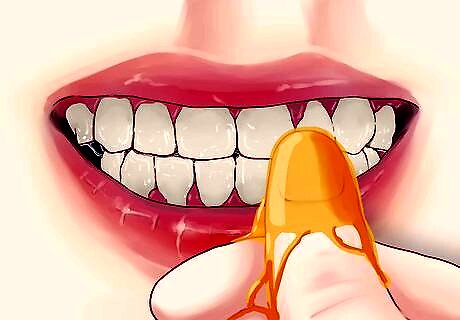
Rub on some honey. Honey has natural antibacterial and antiseptic properties because of a substance called propolis in the honey, so you can put it to work treating your infected gums. Once you brush your teeth, rub a small amount of honey on the problem area of your gums. Given honey's high sugar content, you want to be careful you don't overapply it and do your best to put it on your gums only rather than on your teeth. Be especially careful to avoid putting honey on any teeth that may have cavities, as this will lead to tooth pain.

Drink cranberry juice. Cranberry juice can prevent bacteria from sticking to your teeth, so try drinking up to 4 ounces of the unsweetened juice daily.
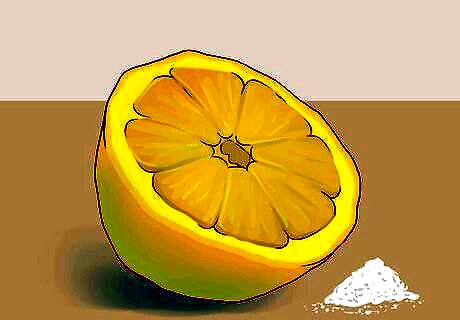
Make a lemon paste. Make a paste from the juice of one lemon and some salt. Mix it well and apply to your teeth. Let it sit for a few minutes and gargle with warm water to rinse it off. Lemons offer a win-win solution for treating gum disease. First, they're an anti-inflammatory, which makes them helpful in treating infected gums. Not only that, but lemons contain vitamin C, which can help your gums fight off infection and reduce the bacterial colonies creating a local alkaline pH.
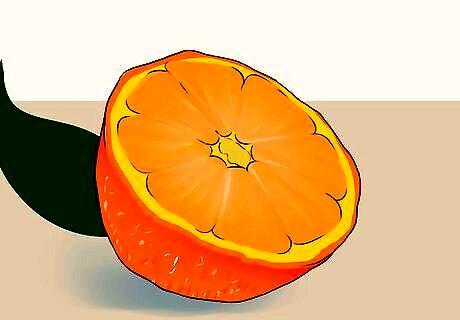
Eat more vitamin C-rich foods. It's not just lemons that can help with gum disease, but also other foods full of vitamin C such as oranges, grapes, guava, kiwi mango, papaya, bell peppers, and strawberry. Vitamin C is an antioxidant, and antioxidants are found to promote connective tissue growth and bone regeneration, which can be affected by various gum problems.
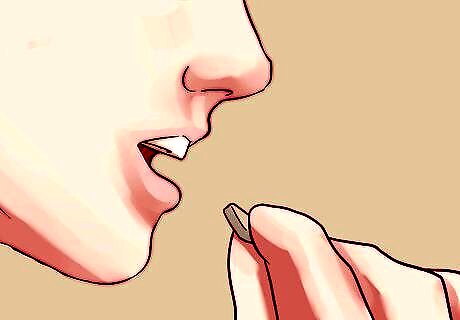
Increase your intake of vitamin D. Vitamin D has anti-inflammatory properties, so be sure you're getting enough of it when you're trying to heal swollen gums and prevent the condition from recurring. Older adults should particularly take note of this vitamin. According to the National Institutes of Health, higher blood levels of vitamin D seem to be linked to a reduced risk of gum disease in people age 50 and older. Get your vitamin D fix by soaking up the sun at least 15 to 20 minutes twice a week and eating D-rich foods such as salmon, whole eggs, sunflower seeds, and cod liver oil.
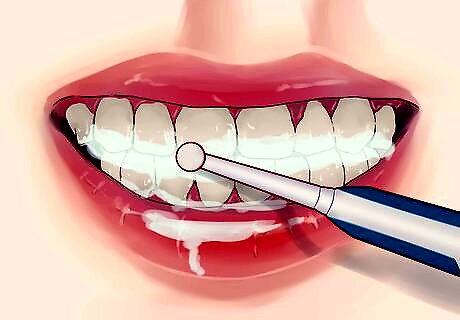
Brush with baking soda. Baking soda neutralizes the acids in your mouth, thereby reducing the chances of tooth decay and gum disease, so it's more of a preventive measure than an actual treatment for gum disease. Add a small amount of baking soda to a bit of warm water and mix to form a paste. Use this paste to brush your teeth using a soft toothbrush and low pressure.
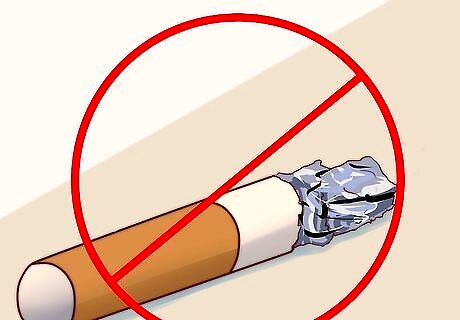
Give up tobacco. Tobacco decreases your ability to fight infection and delays healing. Tobacco users are more likely than nonsmokers to have serious gum disease that doesn't respond as well to treatment and that leads to tooth loss.
Using Drugstore Remedies
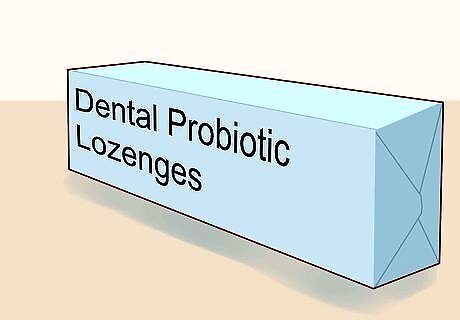
Take a dental probiotic. Lozenges that contain Lactobacillus reuteri Prodentis a "friendly" bacteria that live in the intestines, are being touted as an effective treatment for gingivitis because of their ability to help restore the natural balance of the mouth after you use oral antiseptics and mouthwashes and gels that contain anti-bacterials.
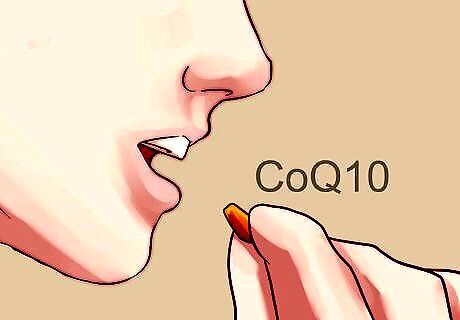
Pick up CoQ10. Co-enzyme Q10 (also known as ubiquinone) is a vitamin-like substance that helps the body convert sugars and fat into energy. According to the Mayo Clinic, early studies suggest CoQ10 taken by mouth or placed on the skin or gums may aid in the treatment of periodontitis.
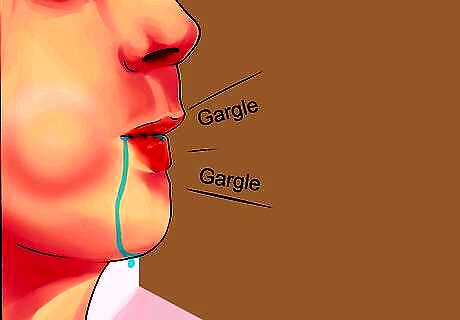
Gargle with Listerine or a generic version. With the exception of prescription mouthwash, the Listerine formula has been shown to be one of the most effective mouthwash formulas for reducing plaque and gingivitis. It's recommended that you use it for 30 seconds twice a day, but always dilute it 50/50 with plain water. While the essential oils that make up this solution can cause a burning sensation in the mouth, people often adjust to it after a few days of regular use.
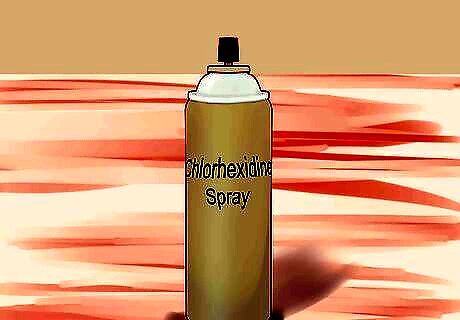
Spray it on. Try incorporating the use of a spray containing chlorhexidine (CHX), a powerful anti-bacterial with plaque-inhibiting properties, in your dental care routine. One study on elderly patients, a group at risk for periodontal disease, found that a once-daily application of a 0.2% CHX spray reduced plaque accumulation and inflammation caused by gingivitis.
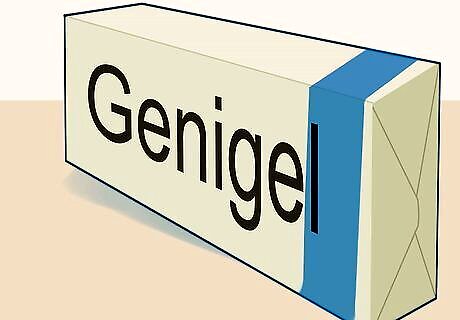
Get Gengigel. This product contains hyaluronic acid, a natural substance found in the connective tissues of the body. Research has shown that hyaluronate has anti-inflammatory, antiedematous and anti-bacterial properties that are effective in the treatment of gingivitis and periodontitis. When Gengigel is applied to gums, it stimulates the production of healthy new tissue. In trials at the University of Rostock, Germany, scientists found it can boost tissue healing by up to a half, increase blood supply, and reduce inflammation.
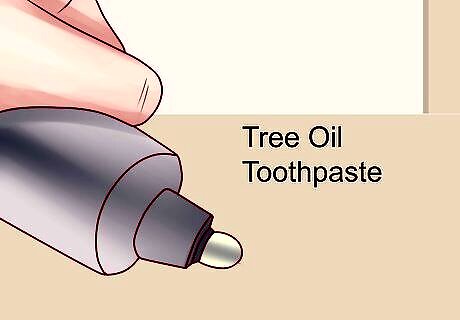
Use a tea tree oil toothpaste. Tea tree oil kills bacteria. Dental plaque is a bacteria. Thus, tea tree oil toothpaste can help get rid of plaque and ease gum pain. You can also add a drop of tea tree oil to your regular toothpaste every time you brush. If you use a tea tree oil extract, be sure not to swallow it, as it can cause stomach irritations, including diarrhea.
















Comments
0 comment